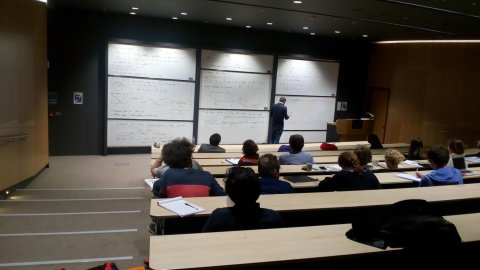Mathematics of the Faraday cage
Abstract
A year ago I gave a talk raising questions about Faraday shielding which stimulated discussion with John Ockendon and others and led to a collaboration with Jon Chapman and Dave Hewett. The problem is one of harmonic functions subject to constant-potential boundary conditions. A year later, we are happy with the solution we have found, and the paper will appear in SIAM Review. Though many assume as we originally did that Faraday shielding must be exponentially effective, and Feynman even argues this explicitly in his Lectures, we have found that in fact, the shielding is only linear. Along the way to explaining this we make use of Mikhlin's numerical method of series expansion, homogenization by multiple scales analysis, conformal mapping, a phase transition, Brownian motion, some ideas recollected from high school about electrostatic induction, and a constrained quadratic optimization problem solvable via a block 2x2 KKT matrix.


